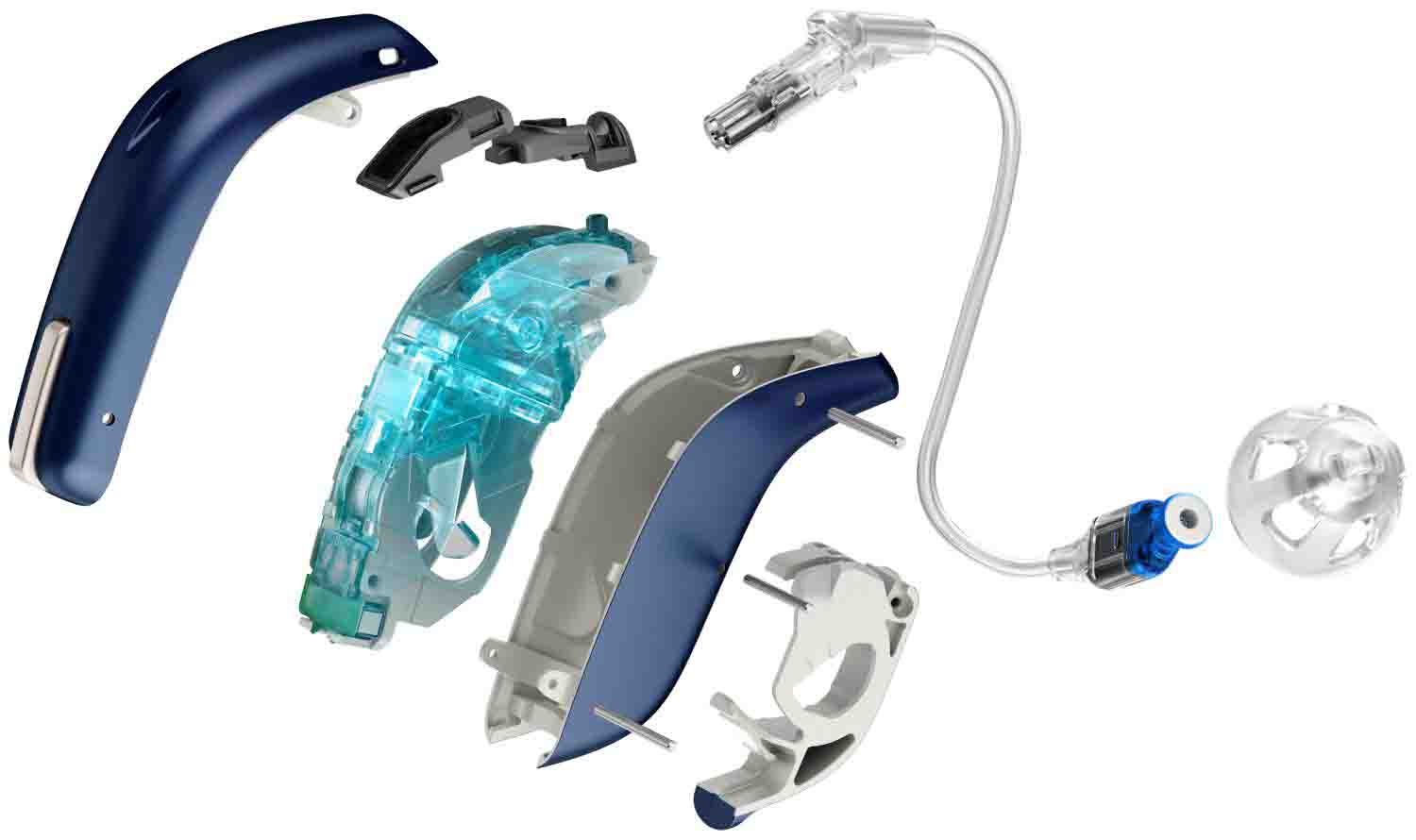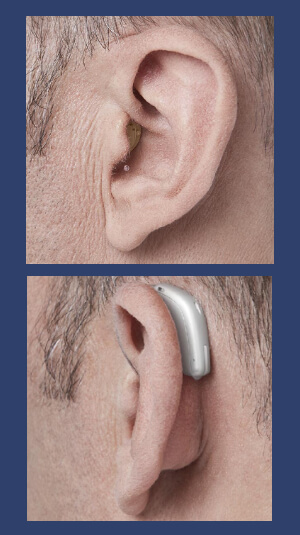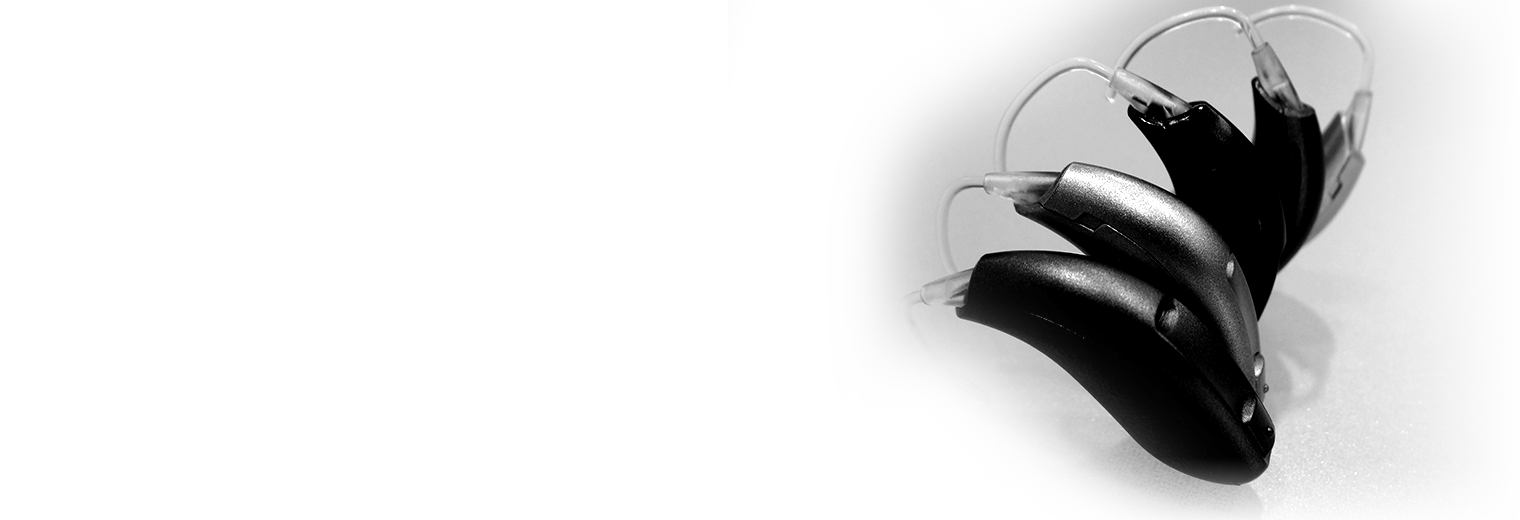|
www.HearingDirectory.ca |
Hearing aids - What you need to know
By Kelly Lebel, Au.D. Reg. CASLPO Last updated on: March 12th, 2025 Hearing aids are devices that adjust sound for people with hearing loss. Today's hearing aids are highly customizable and come with wireless technology. Key points:
Hearing aids are a primary treatment option for those with hearing loss. They have helped millions of people
This is not an exhaustive list. Hearing aid health benefits are well-studied. But too often, those who can benefit underestimate the benefits they provide. Today, hearing aids provide sophisticated sound processing and many features you can customize. They also come with smartphone apps to help you adjust what you hear in real time. Plus, for Canadians, hearing aids are tax-deductible. Not sure if hearing aids are right for you? Visit a hearing clinic and ask about a free hearing aid trial. How do hearing aids work?
of Oticon. Hearing aids contain three parts:
Hearing aids can use disposable or rechargeable batteries. They are also custom-fit and custom-programmed to address your unique hearing loss. Types of hearing aidsThere are many types of hearing aids. The two main categories are behind-the-ear (BTE) and in-the-ear (ITE). Behind-the-ear (BTE)
behind-the-ear hearing aids (bottom). Most hearing aid users choose a behind-the-ear model. It is ideal for those with mild to profound hearing loss of high-frequency sounds. These are often referred to as either RITE (receiver in the ear) or RIC (receiver in canal). Because BTE hearing aids do not block the ear completely, they allow other sounds, to enter the ear. Although worn outside the ear, these are light, small and almost unnoticeable on the ear. They come in a variety of colours and flesh tones. BTE hearing aids also come with many advanced features and tend to offer the best sound quality. In-the-ear (ITE)ITE hearing aids are a single unit that is custom-designed for the ear. They range in size from
The size and style available to you depends on the size of your ear canal and the level of your hearing loss. If you are able to use the smallest IIC style, it is very discreet. Larger, custom products are usually more flexible for people with significant hearing loss. They can also be easier to insert. To find the best hearing aid for you, your hearing professional will consider your
Special features for hearing aidsSeveral features are available to improve your hearing experience. The most common are:
Do you need one or two hearing aids?Two hearing aids provide the most benefits. They provide
When only one ear wears it, the unaided ear may lose speech recognition quicker than the fitted ear. If your hearing professional prescribes hearing aids, they must be fitted. They should amplify sounds so you can hear without discomfort. They must also be secure in the ear. Using a computer, your hearing professional adjusts your hearing aids. He or she will also measure the results. This is known as a calibration. The quiet nature of a hearing clinic does not represent the variety of sounds heard in everyday life. You will need to test your new hearing aids in the sound environments most important to you. Rest assured, your hearing care provider will help you understand your new hearing aids and how to use them. Proper care and maintenanceHearing aids need frequent cleaning, though this is a quick process. Your hearing care professional will show you how to clean your hearing aids. You can also refer to your hearing aid user’s manual. Hearing aids operate under hostile conditions:
So, they may need occasional maintenance or replacement parts. Proper care reduces the need for repair. Your hearing care professional will review the details of your
How long will it take to get used to hearing aids?Your hearing care provider will recommend a schedule to help you get used to your new hearing aids. Unlike eyeglasses, hearing aids generally take days to weeks to get used to. We call this the adjustment period. If you had untreated hearing loss for a long time, this process may take even longer. That's because your brain needs time to adapt. It has to learn how to process all the new noises into recognizable sounds. While it can be a hurdle, this is very good for your brain in the long run! Your hearing environment is unique, so a daily journal is useful. This is helpful especially in the first few weeks and months with your hearing aids. If you're not happy with how they're working in some settings, talk to your hearing care provider. They can likely adjust your hearing aids or give you custom settings. For example, if you're a music lover, a music setting can be a huge help. Have realistic expectationsEven with the best technology, it is important to maintain realistic expectations. While hearing aids make sounds easier to hear, they will not restore normal hearing. Hearing aids re-introduce you to a world of sound, and it takes time to become accustomed to the new sounds. Some people adjust quicker than others. Ask about auditory training programs, communication strategies and assistive listening devices to help. Don’t worry if you find that it takes you a little while to get used to your new hearing aids. This is normal. They will bring big changes to your life, and big changes take a bit of getting used to. Kelly Lebel, Au.D. Reg. CASLPO
You are reading about: Related topics
More information about hearing loss. Featured clinics near me
Schedule a hearing test with Healthy Hearing. Find a clinicThe Healthy Hearing Report |
|
www.HearingDirectory.ca |
Hearing aids - What you need to know
By Kelly Lebel, Au.D. Reg. CASLPO Last updated on: March 12th, 2025 Hearing aids are devices that adjust sound for people with hearing loss. Today's hearing aids are highly customizable and come with wireless technology. |
 Are you located in the United States?
Are you located in the United States?


 Contributing author Kelly Lebel is an audiologist and the Director of Audiology & Training for a major hearing aid manufacturer in Canada. In her capacity, Kelly creates and implements new audiological training material, oversees training of all employees, and manages the audiology team.
Kelly earned her doctorate in audiology from Kent State University in Ohio. As part of the Northeast Ohio Audiology Consortium, she also studied at The University of Akron during her doctoral studies.
She joined the Cleveland Clinic Foundation during her fellowship where she focused on electrophysiology and cochlear implantation. She has also worked with children and adults in the private practice sector in Canada.
Contributing author Kelly Lebel is an audiologist and the Director of Audiology & Training for a major hearing aid manufacturer in Canada. In her capacity, Kelly creates and implements new audiological training material, oversees training of all employees, and manages the audiology team.
Kelly earned her doctorate in audiology from Kent State University in Ohio. As part of the Northeast Ohio Audiology Consortium, she also studied at The University of Akron during her doctoral studies.
She joined the Cleveland Clinic Foundation during her fellowship where she focused on electrophysiology and cochlear implantation. She has also worked with children and adults in the private practice sector in Canada.